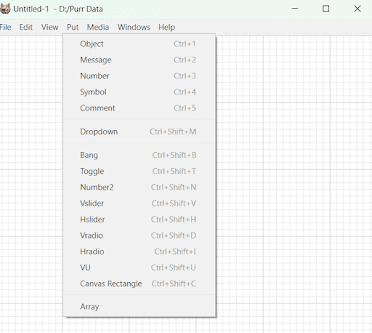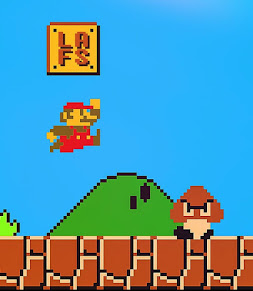Blog3:Why PureData?
Blog3: Why PureData?
Hey everyone. Last blog we talked about what is game sound. Now it's time to talk about some important and technical thing--the game sound producing softwares.
As I have said in the first blog, I will use PureData to make the game sound toolkit. You might be wondering, "Why PureData?"
Sure, there are tons of game sound production softwares out there like Wwise, FMOD Studio, and Pro Tools, but PureData brings something special to the table.
As a sound programming software, PureData is flexible and customisable compared with other sound production software, for example, users can freely customise and adjust the audio processing flow according to their own needs. Whereas other sound production software usually provides preset audio effects and features that users can select and adjust to achieve their goals. Such features are more suitable for toolkits, where users can freely adjust various properties of the audio inside the toolkit. And sound programming software usually supports modular design, users can add new functions and features as needed and integrate them into existing toolkits. This makes the toolkit have good scalability and can meet the different needs of users.
Compared to typical programming softwares:
Compared to typical programming softwares, PureData uses a graphical interface for programming, which allows users to create programs by dragging, dropping and connecting graphical elements, rather than writing traditional text code.
We can demonstrate the properties of pd using the most classic hello world example in computing.
This is a blank Pd document,click Put-Object to put our first object in Pd:
Now that there's nothing in the object box yet, we enter a built-in function print in it, which has the function of outputting all the messages it receives to the output window just before:
This completes the first element: the object . We can see a small box in the upper left corner of the print object, and since the print object has reached the final step of speech analysis, outputting directly to the output window, all we need to do next is to add the data and connections to complete this one PD program. Select the second [Message] in the placements to create a message box and type Hello world in it, after that select the first object named Bang in the second category of the placements and place it down, Bang is something you can understand as a starter, he is a starter/initiator for the whole sequence of the programme. Now your Pd should look like this:
Place your mouse in the lower left corner of the bang, you will find that the pointed pointer becomes round, hold down the mouse and drag a line to place it to the following Message's A-side anchor point, so you will have completed the first connection. And then in the same way, the Message's connection to print, a HelloWorld programme is complete. It contains objects, data input and output, and connections between objects, and is fully functional and ready to run:
Compared to sound designing softwares:
PureData is cross-platform and runs on a wide range of operating systems, including Windows, macOS and Linux, which means users can use the toolkit I designed on all platforms.
An added advantage is that PureData is open source software, which means users are free to view, modify and share their source code.
For example, there are code examples for "Designing Sound" tesxtbook by Andy Farnell:
Then you can download it, and then open it in Pd, you will see this:
This is also one of the major differences between PureData and Max/msp. PureData is open source, developed by Miller Puckette and released under the GPL licence. As such, users have free access to and are free to modify its source code. Max/MSP, on the other hand, is commercial software developed by Cycling ‘74 and requires the purchase of a licence to use. Put it simply,unlike Max/MSP, which requires a license, PureData is completely free to use.
This is so convenient and brilliant, and it is free,that's the reasons I chose PureData.
And I really recommand you to watch this video:Procedural Audio in Pure Data Demo for my Game - Sketchaven - YouTube. In the video, he showed us how he made the Game Audio for his game in Pure Data.
In my next blog, I will talk about the challenges of my project.











Comments
Post a Comment